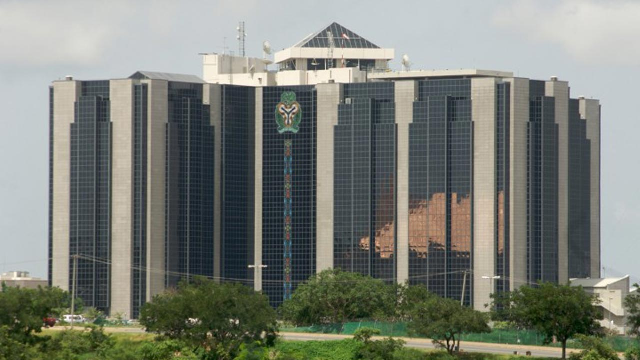After considering the three options available before it to determine the direction of the economy, the 11 members of the Monetary Policy Committee (MPC) unanimously decided to maintain its policy stance for the 18th time. MPC’s decision underscores the fact that it has confidence in the various policies and administrative measures deployed by the Central Bank of Nigeria (CBN).
The Verdict
After having given considerations to many factors which include economic developments in both the local and global markets, the Monetary Policy Committee of the CBN decided to retain the Monetary Policy Rate (MPR), the benchmark interest rate, at 14 per cent, while commercial banks are still required to keep aside 22.5 per cent of their total funds with the CBN and liquidity ratio for the banks stays at 30 per cent. It was the sixth time the MPC will continue to hold rates at this level.
The CBN Governor, Mr. Godwin Emefiele, in a communiqué issued at the end of the two-day meeting that ended on November 22 in Abuja, said the justification given by the 11 persons, who attended the MPC meeting in November to hold policy rates and other parameters was the need to continue to sustain gradual improvements in both output growth and price stability in the economy.
“The MPC recognises the fact that it had held the policy rate and other policy parameters constant over the last several meetings. The committee underscores that by holding its policy position constant, it has confidence in the various policies and administrative measures deployed by the bank, which have resulted in the moderation in domestic price levels and stability in the foreign exchange rate. Thus, a hold position is an expression of confidence in the policy regime, given the gradual improvements in both output growth and price stability. On this premise, the downside risks to growth and upside risks to inflation appear contained,” said Emefiele.
Alternatives to Holding
Apart from the ‘hold’ option, MPC had the options to either loosen or tighten policy rates. The MPC considered that ‘loosening’ would encourage the flow of credit to the real sector, help in reduction of the aggregate cost of credit and spur business spending and investment, thereby reinforcing the CBN’s support for output growth and economic recovery, but on the contrary it believed that doing so will reverse more rapidly, the gains of price and exchange rate stability achieved so far given the liquidity impact that would entail. “The ensuing liquidity will exert pressure on the exchange rate in the light of increased capital flow reversal arising from monetary policy normalisation by the US Fed. This would further depress the capital market,” MPC argued.
“As for tightening, The MPC hold the view that, while tightening will strengthen the stability of the foreign exchange market because of its dampening effect on the demand for foreign exchange, it was however convinced that this would simultaneously dampen investment growth, widen the output gap, depress aggregate demand and weaken output growth”, Emefiele also revealed.
Other Considerations
The committee assessed the macroeconomic environment in 2018 and noted the modest stability thus far achieved in domestic prices, output growth and the financial system. The committee noted that the economy was on the right path, but some key sectors continued to experience significant challenges. The MPC, however, expressed concern about the tepid growth expectations and growing uncertainty in the global financial markets arising from the poor reception of the Brexit deal by British politicians, continuing trade war between the US and her major trading partners, as well as the commencement of US sanctions on Iran.
The committee believed that although the domestic economy was recovering modestly from recession, however, the recovery was tepid and efforts should be stepped up to strengthen aggregate output and demand. In this regard, the committee urged the CBN to deepen and broaden access to finance to high employment elastic sectors with particular emphasis on small and medium scale enterprises. The committee called on the CBN to extend the success recorded under the Anchor Borrowers Programme to other items including fish and palm oil, etc. by introducing more stringent measures to curb access to foreign exchange for products that can be produced within Nigeria.
The MPC welcomed the moderation in inflation in October, reflecting declining food prices. The committee believed that given the negative output gap, the proposed increase in the national minimum wage would stimulate output growth due to prolonged weak aggregate demand arising from salary arrears and contractor debt. Consequently, its impact on the aggregate price level would be largely muted, given that the monetary aggregates have largely underperformed in fiscal 2018. In addition, the prevailing stability in the foreign exchange market would continue to moderate pressures on the domestic price level.
The MPC noted the improvements in the financial stability indicators, including non-performing loans, capital adequacy and liquidity ratios of the Deposit Money Banks (DMBs). It urged the bank to sustain its surveillance over the banking industry by taking prompt corrective measures to further improve stability in the system. The committee also called on the fiscal authorities to build significant buffers to strengthen the efficacy of monetary policy.
Outlook and Risks
According to MPC, forecasts of key macroeconomic variables indicate a positive outlook for Nigeria’s economy in fourth quarter of 2018. The committee expected that the effective implementation of the Economic Recovery and Growth Plan (ERGP) and the 2018 budget, improvements in the security challenges, enhanced flow of credit to the real sector and stability in the foreign exchange market will redirect the economy on a path of inclusive and sustainable growth. Increased production in the oil and the non-oil sectors are also expected to drive output growth in the medium term. The committee, however, acknowledged the downside risks to this outlook to include: reduced portfolio inflows, weak of fiscal buffers, low domestic credit, and sluggish aggregate demand.
The inflation outlook suggests continued, but moderate inflationary pressure to the end of 2018, based largely on increased consumer spending for the Christmas festivities, election-related expenditure and increased pace of implementation of the 2018 federal government budget. Improvements in the security, increased harvests as well as a stable exchange rate are expected to moderate the rise in inflation.
Overall, the outlook for the economy remains positive with a growth projection of 1.75 per cent in 2018.
Global Review
The committee noted the contraction in global output, underpinned largely by escalating trade tensions resulting in widespread uncertainty and waning investor confidence. Consequently, global growth in 2018 has been downgraded to 3.7 per cent from the earlier projection of 3.9 per cent. Growth softened in major advanced economies in the third quarter of 2018. In the Emerging Markets and Developing Economies (EMDEs), growth remained divergent, reflecting a combination of country-specific factors.
Thus, growth in the advanced economies is expected to remain at 2.4 per cent in 2018, supported by strong output growth in the US projected at 2.9 per cent. The U.S. expansionary fiscal stance, strong wage growth and continued inflow of capital into U.S. dollar denominated assets, are expected to provide the impetus for growth. In the United Kingdom, growth remained weak, hampered by uncertainties around Brexit negotiations. Growth in the Euro Area, projected at 2.0 per cent, appears to be subdued by low domestic aggregate demand amidst relatively high unemployment and reduced global trade. In the emerging markets and developing economies, growth was revised downwards to 4.7 per cent from the earlier projection of 4.9 per cent, largely in anticipation of a slowdown in China as the country is confronted with an adverse external trade environment.
Overall, the downside risks to global economic activity remained: elevated financial fragilities and policy uncertainties, the gradual erosion of rule-based multilateral trading system, tighter financial conditions with latent disruptive portfolio adjustments, increased capital flow reversals with potentials for heightened exchange rate depreciation and some volatility, fiscal fragilities and increased debt burden, geo-political tensions and increasingly depressed aggregate demand in some countries. These factors will continue to shape developments for the rest of 2018 and into 2019.
The MPC also noted that monetary policy in most advanced economies, particularly the US, continued on a path of normalisation in view of strong wage growth and declining unemployment. The Bank of England hiked its policy rate in August 2018, while the European Central Bank (ECB) has given guidance to terminate its asset purchase programme in December 2018.
The committee was concerned that these developments will in the medium term, accentuate capital flow reversals from emerging and developing economies, including Nigeria.











